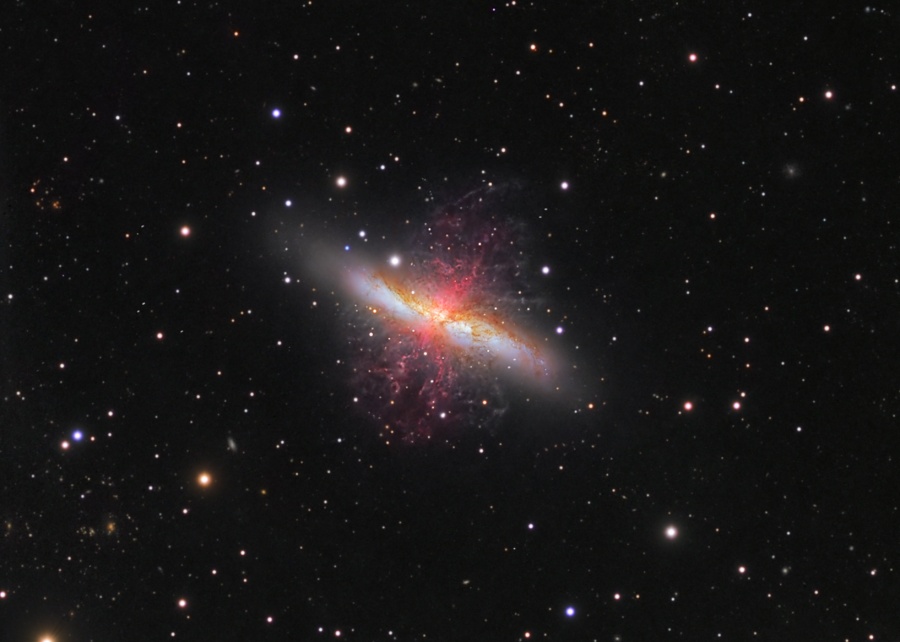Please vote for the TWO best Astronomy Pictures of the Day (image and text) of October 2 - 8, 2011.
(Repeated APODs are not included in the poll.)
All titles are clickable and link to the original APOD page.
We ask for your help in choosing an APOW as this helps Jerry and Robert create "year in APOD images" review lectures, create APOM and APOY polls that can be used to create a free PDF calendar at year's end, and provides feedback on which images and APODs were relatively well received. You can select two top images for the week.
We are very interested in why you selected the APODs you voted for, and enthusiastically welcome your telling us why by responding to this thread.
Thank you!
_______________________________________________________________
<- Previous week's poll
Video Credit: A. Klypin (NMSU), J. Primack (UCSC) et al., Chris Henze (NASA Ames),
NASA's Pleiades Supercomputer
Music (© 2002): Her Knees Deep in Your Mind by Ray Lynch
NASA's Pleiades Supercomputer
Music (© 2002): Her Knees Deep in Your Mind by Ray Lynch
This communication was not meant for human eyes. It was not even meant for aliens eyes. It's an attempt to communicate directly with your smartphone. Cameras on many smartphones can image the above Quick Response (QR) code and then common applications can tell you what it means. Sometimes the deciphered code will reveal a web site address, prompting the smartphone to then ask you if you want to access this address to learn more about the object. QR codes are two-dimensional analogs of bar codes that can be scanned in any orientation and tolerate several types of errors. These codes are being used increasingly as doors between real objects and web-based information about those objects, and so are popping up increasingly in unexpected places. Anyone can create a QR code from any of several free online services, print it out, and affix it to an object. Although not meant to communicate with aliens, QR codes employ several attributes common to famous alien communication attempts. Can you -- or a local smartphone -- figure out what the above QR code means?
Click to play embedded YouTube video.
Image Credit: SOHO, SDO, NASA, ESA
Also known as the Cigar Galaxy for its elongated visual appearance, M82 is a starburst galaxy with a superwind. In fact, through ensuing supernova explosions and powerful winds from massive stars, the burst of star formation in M82 is driving the prodigous outflow of material. Evidence for the superwind from the galaxy's central regions is clear in this sharp composite image, based on data from small telescopes on planet Earth. The composite highlights emission from filaments of atomic hydrogen gas in reddish hues. The filaments extend for over 10,000 light-years. Some of the gas in the superwind, enriched in heavy elements forged in the massive stars, will eventually escape into intergalactic space. Triggered by a close encounter with nearby large galaxy M81, the furious burst of star formation in M82 should last about 100 million years or so. M82 is 12 million light-years distant, near the northern boundary of Ursa Major.
Early last November, small but active Comet Hartley 2 (103/P Hartley) became the fifth comet imaged close-up by a spacecraft from planet Earth. Still cruising through the solar system with a 6 year orbital period, Hartley 2 is making astronomical headlines again. New Herschel Space Observatory measurements indicate that the water found in this comet's thin atmosphere or coma has the same ratio of the hydrogen isotope deuterium (in heavy water) as the oceans of our fair planet. Hartley 2 originated in the distant Kuiper Belt, a region beyond the orbit of Neptune that is a reservoir of icy cometary bodies and dwarf planets. Since the ratio of deuterium is related to the solar system environment where the comet formed, the Herschel results indicate that Kuiper Belt comets could have contributed substantial amounts of water to Earth's oceans. Comet Hartley 2 appears in this starry skyscape from last November sporting a tantalizing greenish coma appropriately sailing through the nautical constellation Puppis. Below the comet are open star clusters M47 (right) and M46 (left).
One solar day on a planet is the length of time from noon to noon. A solar day lasts 24 hours on planet Earth. On Mercury a solar day is about 176 Earth days long. And during its first Mercury solar day in orbit the MESSENGER spacecraft has imaged nearly the entire surface of the innermost planet to generate a global monochrome map at 250 meters per pixel resolution and a 1 kilometer per pixel resolution color map. Examples of the maps, mosaics constructed from thousands of images made under uniform lighting conditions, are shown (monochrome at left), both centered along the planet's 75 degrees East longitude meridian. The MESSENGER spacecraft's second Mercury solar day will likely include more high resolution targeted observations of the planet's surface features. (Editor's note: Due to Mercury's 3:2 spin-orbit resonance, a Mercury solar day is 2 Mercury years long.)
<- Previous week's poll



